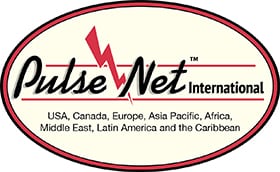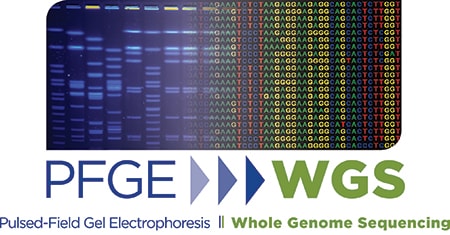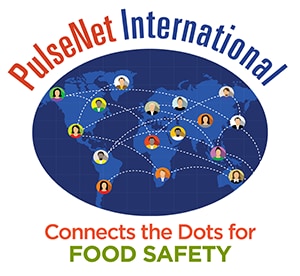PulseNet International: On the Path to Implementing Whole Genome Sequencing for Foodborne Disease Surveillance
Download Fact Sheet: PulseNet International pdf icon[PDF – 2 pages] Link to articleexternal icon

The Vision: To save lives and money by using whole genome sequencing (WGS) in all public health laboratories globally to improve response to foodborne illnesses and outbreaks.
The Mission: To standardize sequence analysis and share information in real time within regional and global laboratory networks to support foodborne disease surveillance and outbreak response.
The Status: PulseNet International is in the process of developing, validating, and issuing standard analysis procedures, setting up quality control programs, and establishing standardized nomenclature to make it easier for network members to exchange and compare data.
Why are PulseNet International members moving toward WGS?
“We work together as a global community to enhance and support the implementation of WGS”
Dr. Peter Gerner-Smidt, Centers for Disease Control and Prevention
- WGS is more precise and provides more detailed information about bacteria than traditional methods such as pulsed-field gel electrophoresis (PFGE) and multi-locus variable number tandem repeat analysis (MLVA).
- WGS can be used for most foodborne disease organisms, including Salmonella, Listeria, Campylobacter, Escherichia coli, Vibrio, and Shigella.
- Data can be used across laboratories for routine surveillance, outbreak identification, source attribution, antimicrobial resistance prediction, and reference characterization.

PFGE is currently the standard for PulseNet International, and is a valuable method to set the foundation of a country’s network before moving to WGS
What are the benefits of international standardization of WGS?
Network participants generate data that may be compared with data from other laboratories without further processing. This allows public health officials to monitor illness trends quickly and effectively, and collaborate with each other as well as with the food authorities to stop international outbreaks.
Thinking about implementing WGS in your laboratory?
Assess whether your lab is ready:
- Determine what sequencing platform meets your laboratory’s needs.
- Assess your IT infrastructure, including internet connection speed, storage space, computing power, and software.
- Discuss a plan to get started with network members.
- Consider an institutional policy for public data-sharing.
- Identify staff training opportunities.
Steps that PulseNet International is taking to standardize WGS:
Laboratory:

- Sharing laboratory protocols for different sequencing platforms.
- Providing results from validation studies.
- Implementing a quality control and assurance program.
Analysis:
PulseNet International is standardizing analysis of WGS data by using whole genome multi-locus sequence typing (wgMLST), also known as the gene-by-gene approach. This analysis method was chosen because:
- It can be standardized.
- It offers high epidemiologic concordance.
- It generates stable and portable results that can be easily shared and compared.
- Strains can be named in a way that reflects their similarity to each other.
- Data can be analyzed by laboratorians without formal training in bioinformatics.
- Information about antimicrobial resistance, serotype, and virulence factors can be extracted at the same time.
- Analysis tools could be established in the public domain.
Things to know before starting WGS in your country:
- A gradual transition from traditional methods to WGS is key.
- The timing for switching to WGS will vary among countries and regions.
- Public health professionals should be prepared and trained to use WGS data to support public health decision-making.
- Epidemiological data is needed to interpret WGS results during an outbreak.
- Consider depositing bacterial DNA sequences collected for surveillance in a public repository, so that public health officials in other countries can connect cases and detect more outbreaks.
- The global allele naming databases and wgMLST algorithms should be placed in a public repository for global standardization.
- Laboratories should validate WGS processes before using them for routine public health surveillance.